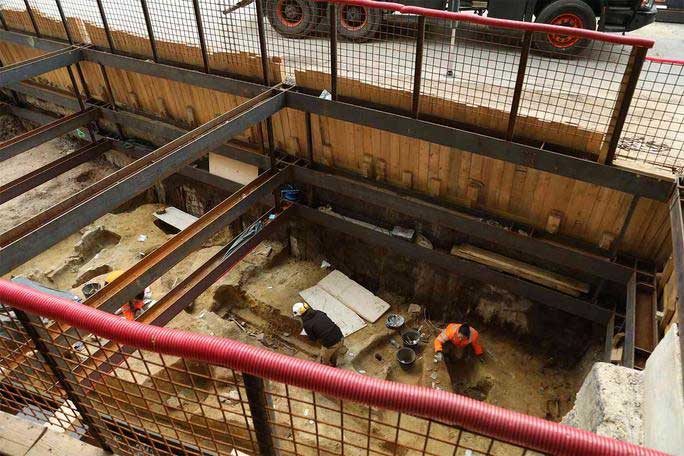Evidence of the existence of the legendary ancient city of Lutetia, which historical records indicate is the precursor to today’s capital of France, has recently emerged in the most astonishing way at the bustling Paris train station.
According to Ancient Origins, a new archaeological discovery has shown that the Paris train station was inadvertently built atop a nearly 2,000-year-old cemetery of Lutetia, a wealthy and prosperous town of Gallo-Roman origin.
This discovery went completely unnoticed when the Port-Royal train station in Paris was constructed in 2014.

Excavation site – (Photo: INRAP)
It was only when plans for a new entrance to the station were announced that scientists from the National Institute for Preventive Archaeological Research (INRAP) conducted a detailed survey by digging several trenches over an area of 200m2 around the station.
A series of ancient graves containing skeletons alongside numerous valuable artifacts were quickly uncovered.
The excavation site is close to the Saint Jacques Cemetery, an ancient burial ground that once occupied the center of present-day Paris. This burial area, used from the 1st to the 3rd centuries AD, may be larger than previously thought.
Previously, the known part of the Saint Jacques Cemetery had been excavated since the 17th century. Some of the most valuable treasures were recovered, while most of the skeletons and less valuable wooden grave goods were left in situ, allowing current structures to be built above.
The new excavation at the Port-Royal train station in Paris began in March. To date, they have uncovered 50 graves, all belonging to the powerful Parisii Celtic tribe, who fought against the Roman invasion but ultimately succumbed and surrendered in the 1st century BC.
However, they maintained traditional cultural practices, and many were evidently still affluent. The newly discovered graves also yielded a treasure trove of valuable artifacts, including jewelry, hairpins, belts, ceramics, and glassware.
Inside one coffin, alongside human remains, INRAP archaeologists also found the skeleton of a pig. Next to it was a sacrificial pit containing the bones of another small animal.
Another deceased individual was found with a coin in their mouth, referred to as a “ferry fee”, which, according to Greek mythology, the dead would use to pay Charon, the ferryman of the underworld, when crossing the river Styx.
INRAP has decided to excavate and recover everything from this ancient burial site for analysis, rather than only retrieving items of value as was done in the 17th century.
This decision is driven by a more important goal: to learn about Lutetia, the “lost ancient city” that exists only in records, as two millennia of construction have completely erased it.
INRAP will strive to study the DNA of the remains and analyze grave goods to fully reconstruct the life of the ancient Parisii.
- The difference between running for 30 minutes in the morning and walking for 60 minutes in the evening
- Visiting the 1,000-year-old windmill system still operating well in Iran
- After dedicating 10 years to studying the secrets of happiness, a researcher realizes they missed the number one important thing


















































